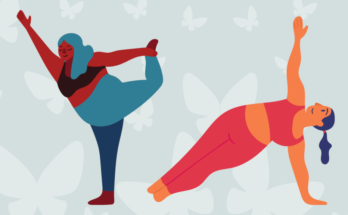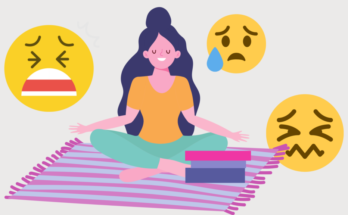✅ Fact Checked
🧘 If you only got 30 seconds:
Doing yoga on a carpet or a carpeted floor isn’t the ideal way to practice. Nonetheless, it can offer more comfort and cushion for gentle seated practices and even help you improve your core engagement in certain poses.
When you’re practicing yoga on a carpet, you can either use a mat or skip it entirely. In the latter case, you risk slipping and potentially injuring yourself due to the lack of grip. To practice yoga on a carpet without a mat, make sure to avoid fast-flowing yoga styles and if possible, use a wall to help you with balancing and as a way to modify certain yoga poses.
1/3 Can you do yoga without a mat on a carpet?
You can certainly do yoga on a carpet without using a yoga mat, but this practice will naturally have some limitations and challenges.
Doing yoga on a carpet isn’t necessarily a bad thing, but you should keep these risks in mind:
- First, most carpets have a soft and smooth texture, meaning that you will likely struggle with your grip in certain yoga poses. Your hands and feet will most probably slide in Downward Dog, which is not only frustrating but also sometimes dangerous.
- Second, depending on the type of carpet you have, you might struggle with balancing postures while practicing on a carpeted floor or even with skin issues. Super fluffy carpets are great to the touch but are just too squishy to offer enough stability and can cause wobbliness. Whereas carpets with very short fibers might even cause skin irritation due to friction while you’re practicing your transitions.
- Third, doing yoga on a carpet isn’t very hygienic. If cleaning a large heavy carpet isn’t a part of your weekly routine, then your carpeted floor is likely swarming with bacteria and dust. All this can cause nasal irritation and is generally not the best environment for a relaxing yoga practice. Plus, the more you sweat on your carpet while doing yoga, the dirtier it becomes.

The good news is that carpets are often large and heavy, meaning that they offer good traction and won’t slide around while you’re moving through your yoga sequence. Most carpeted floors also offer enough cushion for sensitive joints as well as insulate your body from the cold floor.
If you’re up to a challenge, try doing yoga on a carpet and you will feel that your muscles are doing double the work to keep you stable as they would otherwise do with a sticky yoga mat.
| Yoga on a carpet – PROS | Yoga on a carpet – CONS |
|---|---|
| Living room carpets are often super heavy so they don’t slide on the floor, offering you good traction and a solid surface to practice | Poor grip, which can cause slipping and potentially lead to injury |
| Good insulation for winter yoga practice | Can cause skin irritation due to constant fraction during yoga transitions |
| Sufficient cushion for spine and sensitive joints | Not very hygienic especially if you constantly walk on it; can be dusty and cause irritation |
| Activates your muscles better than a sticky yoga mat | Lack of support and stability. Most carpets are simply too squishy for balancing postures |
| You’re not limited by a small rectangular yoga mat so you have more space for exploration |
My Favorite Yoga Gear Essentials
I’m picky about my yoga gear
I’m ready to blow some cash on high-quality ethically-made items that are eco-friendly and built to last 🌱 It supports my efforts for sustainable yoga practice and lifestyle.
2/3 How can I practice yoga without a mat on a carpet?
If you don’t have a yoga mat at hand, but want to do yoga, a carpet can be a good temporary solution. Here are my top tips on how to practice yoga on a carpet without risking any injuries.
- Avoid fast flows. A slippery carpet surface isn’t the place for cardio yoga flows and fast-flowing Vinyasa. When you don’t have a stable surface under your feet, you don’t only risk falling out of the pose and injuring yourself but also getting frustrated and discouraged from your yoga practice.
- Stick to gentle seated and standing postures. A carpeted floor and gentle seated and standing stretches are a great match. Your joints will stay happy and you’ll feel relaxed and cozy if you practice on a really fluffy carpet. The only thing that beats stretching on a soft carpet is probably yoga in bed.
- Do practice balance poses, but don’t push it. The squishiness of the carpet can challenge the little muscles in your feet as well as those little stabilizing muscles in a completely new way. However, go for yoga poses you’re 100% confident in rather than work on challenging your balance.
- Use a wall. If available, I highly recommend using a wall in your mat-less yoga practice. It can help you with balance and it can help you adjust certain yoga poses that can get really uncomfortable on a carpet, for example Downward Facing Dog.

3/3 Can I use yoga mat on a carpet?
You can absolutely use a yoga mat on a carpet. You will likely get a slightly different sensation during your practice, especially if you’re used to doing yoga on a solid surface. A carpet will offer extra padding and softness, which might be good for people with sore wrists and joints.
With that being said, not every yoga mat or exercise mat will work well on a carpet. For example, thin travel yoga mats will likely stretch when you’re in Downward Dog and bunch up during your flow. Some yoga mats can also slide around when you’re trying to hop forward during your Vinyasa, which can potentially lead to injury.
Wondering what kind of yoga mat is best for carpets and carpeted floors? A rule of thumb is to go for yoga mats that are:
- made of sturdy material – cork and natural rubber yoga mats are probably the best yoga mats for carpeted floors since they will offer good traction and won’t slide around
- heavy – you want your yoga mat to be on a heavier side. The heavier it is, the better it will hide all the bumps and lumps in the carpet and the more stable surface it will offer
- moderately thick – heavy yoga mats are also on a thicker side. Thicker yoga mats won’t bunch up during practice and will lie flat even during active yoga flow.
Yoga Deals & Discount Codes
Brands I use and love
Here’s a collection of companies and brands I’ve tried and loved ❤️ I’ve grouped them into 4 categories. The brands in each category are sorted alphabetically and include a: short about/best for info, link to my full review, and a discount code (if available).
How do you stabilize a yoga mat on a carpet?
Is your yoga mat not working well on a carpeted floor? If it keeps sliding and getting stretched during movement, you can try these two options that can keep the mat in place and make your practice more comfortable. The only thing to keep in mind is that for these options to work, your carpet has to be stable on the floor. If your carpet is bunching and moving around, you’ll have to fix this issue first.
- Rug pad grippers. Rug pad grippers (like this one) are used to prevent rugs and carpets from bunching and sliding on a wood or tiled floor. However, you can also use them to prevent your yoga mat from slipping. Simply glue 4 grippers on the top of your carpet where four corners of your yoga mat would go and you’re good to go!
- Portable yoga floor. You can build your own solid platform to use under a yoga mat or you can invest in a ready-made like this one from Lifeboard. It works great on carpets and carpeted floors and offers good traction.
Source link




